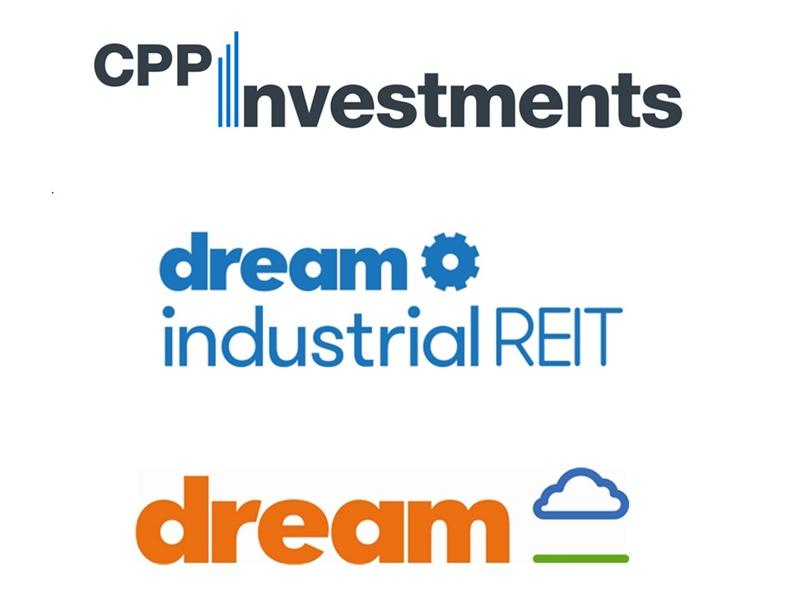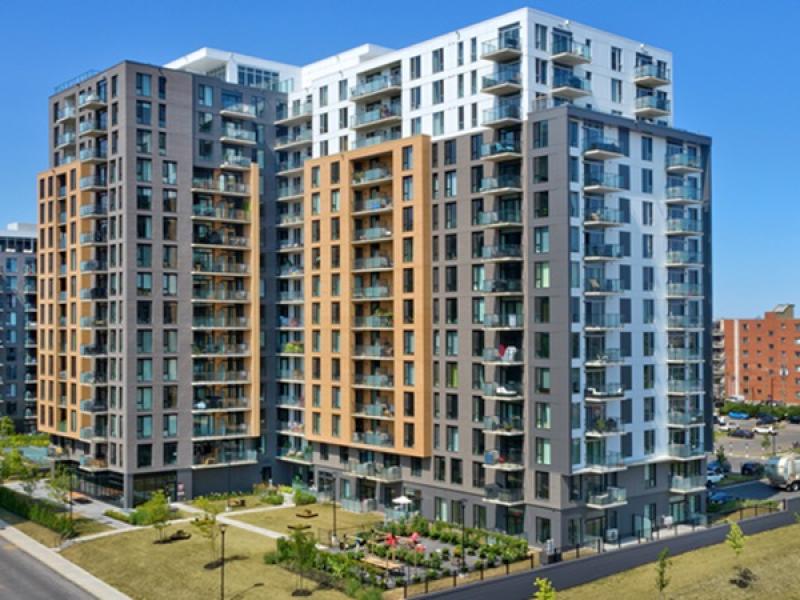
WCAIC apartments conference closing panelists, from left: moderator Phil Milroy of Westcorp, Randy Ferguson of Strategic Group, Anthony Lanni of Quadreal Property Group, and Dan Sander of Hollyburn Properties. (Ann White RENX)
Canada’s three largest Western cities are divided by the Rocky Mountains, and a mountain of difference is a good way to describe market conditions between Vancouver and its Alberta counterparts Calgary and Edmonton.
So, closing panel members at the recent Western Canada Apartment Investment Conference in Edmonton had a lot of ground to cover. However, they all agreed there is a strong and growing demand for rental apartments, specifically purpose-built rentals, in the three major metro regions.
“The demand for rental products has been insatiable,” said Dan Sander of Hollyburn Properties, speaking on the Vancouver market. “There is demand due to immigrants, there is demand because ownership is such a stretch, there is demand because people move to the city from suburban areas.”
With government taxation, fees and other charges currently discouraging the construction of new, purpose-built rentals in Vancouver, he said inventories are continuing to tighten while rental rates increase. The city’s apartment vacancy rate is about one per cent, according to CMHC and is not expected to change appreciably any time soon.
Although the stats for Calgary and Edmonton aren’t as dramatic due to the struggling oil patch (5.3 per cent vacancy in Edmonton, 3.9 per cent in Calgary, according to CMHC) other factors are in play driving strong rental demand in those two cities.
“The driver here is not need, necessarily, to rent. It’s propensity to rent,” said Randy Ferguson, president of Strategic Group, which has 1,625 units in Western Canada and boasts a 97 per cent occupancy rate. It will deliver about a thousand more apartments during the next year.
“The (mortgage) stress test helped our rentals a lot when it was introduced and you had to qualify 200 basis points over what you normally needed for a mortgage,” added Ferguson.
“The month that kicked in was the biggest single month of absorption we’ve had in our portfolio.”
Immigration creates population growth
But, he said, it’s more than that. Particularly in Edmonton, and also in Calgary, amenity-packed new product is being delivered which is creating interest in the rental market. In-migration remains strong in both markets (as it does in Vancouver), and a significant amount of that is immigration from outside Canada.
“Even through the worst of the downturn, our international in-migration has been steady. And international in-migration is important to track because there is a propensity to rent among immigrants coming to Alberta as opposed to inter-provincial migration where there is a higher propensity to buy.”
Sander noted Metro Vancouver receives about 30,000 immigrants each year, and about that number also go to Alberta – mainly Calgary and Edmonton.
“Last year we built about 4,000 purpose-built units in Vancouver,” he observed. “That’s a three million population. Edmonton probably beat us with million (population) so that is a drop in the bucket on the purpose-built market.”
He listed reasons why, and most relate to government and a “policy-induced recession” in the housing market. Developers and owners face a five per cent transfer tax, rent controls capped at cost-of-living, a 20 per cent foreign buyer tax, empty homes tax, speculation tax, schools tax and more.
The City of Vancouver recently reduced its commercial tax rate by two per cent to give downtown businesses hit hard by appreciating property values a break, but that burden now falls on the residential sector.
Construction labour and materials costs are also rising rapidly.
Burden on developers, owners “brutal”
Build or buy in the Vancouver housing sector, the costs are significant.
“It’s been brutal,” Sander said. “It’s really made apartment as an asset class challenging to acquire because you can’t get the turnover, you can’t get revenue up and yet vendors still want 2017 pricing.”
Contrast that to conditions in Alberta. There might be less pressing demand due to the ongoing struggle in the resources sector, but developers have other reasons to build, or convert existing under-utilized office buildings (especially in Calgary with a downtown vacancy rate north of 20 per cent).
“I believe Alberta doesn’t have an economic problem as much as it has a sentiment problem,”said Anthony Lanni, executive vice-president of residential for Quadreal Property Group, which owns about 60,000 rentals across North America including about 12,000 in Canada.
“Household incomes are the highest in Alberta versus anywhere else in the country. Some of the lowest taxes (are) here and some of the most business-friendly regulations.
“But, there is a sentiment challenge. We don’t have that in British Columbia or any of the other markets that we operate in.”
Indeed, panel moderator Phil Milroy, president and CEO of Westcorp, summed it up in one sentence.
“One of the differences between Vancouver and the two Alberta markets is that when a tenant wants to move out in Vancouver, you clap your hands and jump up and down for joy,” Milroy said. “In Alberta, you are sad to see them go because there is a cost to replacing them.”
Aging rental apartment inventories
Both Calgary and Edmonton also have an aging inventories of existing rental stock. As much as 15 per cent was built before 1976, Ferguson said.
“There is elements of that inventory that are going to come off in functional obsolescence and there are elements that are going to come off to repurposing,” he noted. “So that stuff is just going to be torn down. That inventory is going to need to be replaced.”
The process is well underway in Edmonton, galvanized by ICE District and the multitude of other projects revitalizing the downtown. In Calgary, projects in areas such as the Beltline and conversions downtown are beginning the turnover.
“I’m really impressed with the new product that is coming in Edmonton. In B.C. and Vancouver we’ve just seen so much condo, it’s kind of sickening and we’re tired of it. So to see new purpose-built rental come on in Calgary and Edmonton is very refreshing and encouraging,” Ferguson said.
“Particularly in Edmonton there’s how many units per capita? It probably leads the country.”
In terms of investment in Calgary and Edmonton, Lanni said large institutional investors such as Quadreal face significant challenges.
Replace commodity with quality apartments
“There is a tremendous amount of commodity product, and older product, that is in need of capital that keeps institutions away. When we start looking at the total universe, in Alberta, the kind of product we want to buy is actually quite limited,” Lanni said.
“We need to see scale, we need to see reasonable building condition . . . it doesn’t have to be perfect, but it has to show investment of capital over a period of time.
“Where we can really dip our toe in, or jump in with both feet, is where we have a chance to, I hate to use the term, but place-make. Where we can really come in and transform a neighbourhood, invest the right amount of capital.”
Ferguson and Strategic Group can work with larger developments such as a 341-apartment ONE tower it is building in the Beltline in Calgary, or a smaller six-storey mixed-use rental with 66 units in the Marda Loop neighbourhood.
He said both feature the latest and best amenities and finishes, rivalling or surpassing what many call “condo quality”.
“That’s the things we can do that are really exciting,” Ferguson said. “That helps demand to continue in the rental market.”







